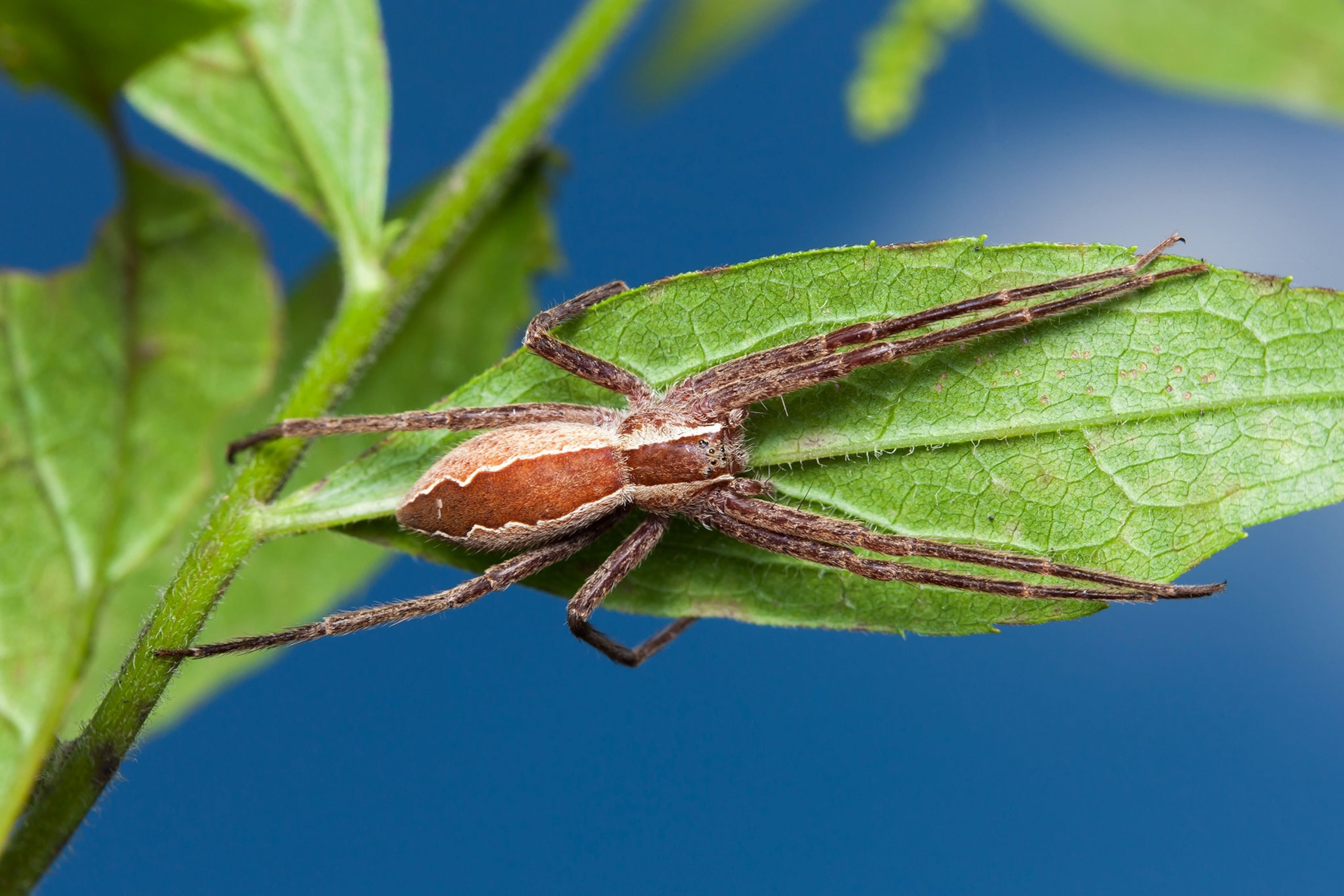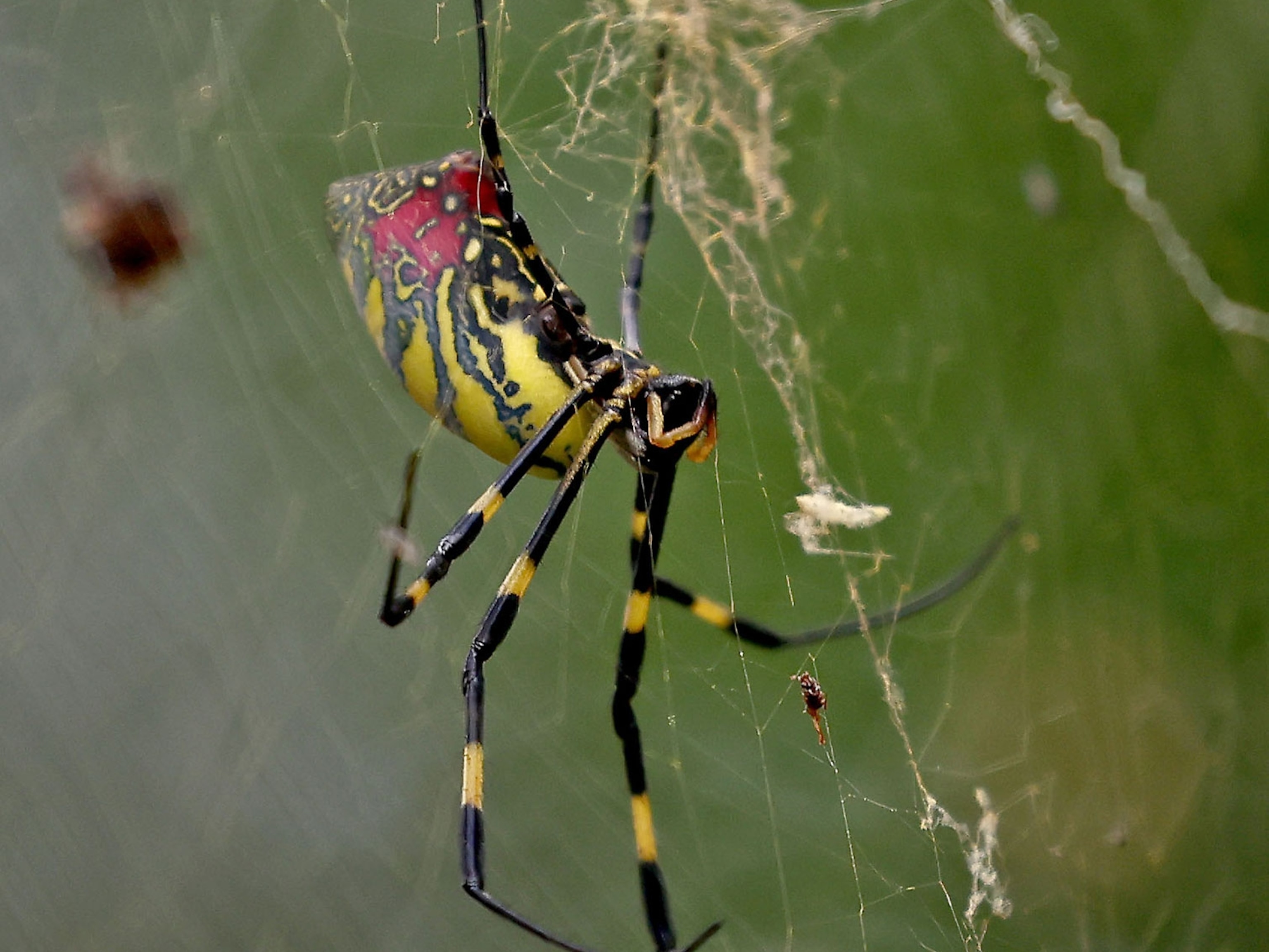Kinky Spiders Tie Up Their Lovers to Avoid Getting Eaten
Male nursery web spiders have some clever strategies for becoming fathers—and dodging death.
Talk about ties that bind: Some male spiders tie up their partners with silken cords before and during sex.
Such bonds allow males to extend their mating time, which boosts their odds of fatherhood by letting them pass along extra sperm, according to a new study.
The discovery further underscores the many weird ways animals attract and secure mates—a process that spiders, arguably the animal kingdom’s freakiest lovers, have pushed to the limit. (See "This Spider Destroys Female Genitalia to Prevent Future Mating.")
“That’s why I love studying spiders,” says study co-author Eileen Hebets of the University of Nebraska-Lincoln. “You often see these extreme behaviors" that offer insight into evolution.
(New "Blue Face" Peacock Spider Is Fancy Dancer)
And when Hebets says “extreme,” she means it: Some male spiders even sacrifice themselves to their mates during and after sex in a macabre yet effective effort to ensure their future offspring’s survival. (See "Male Spiders Self-Sacrifice, Lose Genitals.")

But female spiders are often larger and more aggressive than their partners, and often try to eat males before they have a chance to mate. That's another reason restraints come in handy: If the female is immobilized, males can slip away without getting eaten.
Tying the Knot
Males across at least 30 different spider species are already known to wrap some of the female’s front legs in silk before sex, temporarily crippling her.
But after reading about these so-called bridal veils and the spiders that make them, Alissa Anderson of the University of Nebraska-Lincoln realized that one fan of arachnid bondage had eluded study: Pisaurina mira, the nursery web spider.
Despite its impressive technique—it’s one of only two documented species that spins the veil in midair—the spider hadn’t been researched at all, aside from the 1988 paper that first described the behavior.
So Anderson hit the road, collecting male and female P. mira specimens across Florida and Nebraska and taking them back to the lab, where she filmed them in a plastic “mating arena."
However, she didn’t let all of the males get their kink on: She covered half of the males’ spinnerets—their silk-spinning organs—with dental silicone after temporarily immobilizing them with short stints in a freezer, which doesn't harm the arachnids. “It is actually very easy,” she wrote in an email.
Too bad for those hopeless, ropeless males.
Anderson and Hebets found definitively that male P. mira spiders had a much greater chance of being eaten by their lovers if they weren’t able to tie them up, according to the research, published February 24 in Biology Letters.
What’s more, males that could produce bridal veils had a much better chance of mounting females twice in one sitting than those who couldn’t, seemingly improving those males’ odds of becoming dads.
More to Unravel
But there’s more about P. mira to disentangle, particularly the female's point-of-view.
“We do not know if the female is struggling to get out of the wrapping because she is trying to avoid obtaining a second insertion, or if she is simply trying to cannibalize the male, or both,” wrote Anderson. (See "7 Bug and Spider Myths Squashed.")
It’s also possible that P. mira’s bridal veil is more than a physical restraint.
Catherine Scott of the University of Toronto, who wasn’t involved with the study, points out that males may add cocktails of pheromones to the silk threads, which could make a female more interested in the male.
Spider biologists are sure about one thing, though: P. mira’s high-wire hijinks are probably vanilla compared to other species’ undiscovered mating rituals.
“There are more than 45,000 different spider species worldwide,” wrote Scott in an email, “and mating behavior in most of them has never been studied.”
Follow Michael Greshko on Twitter.





